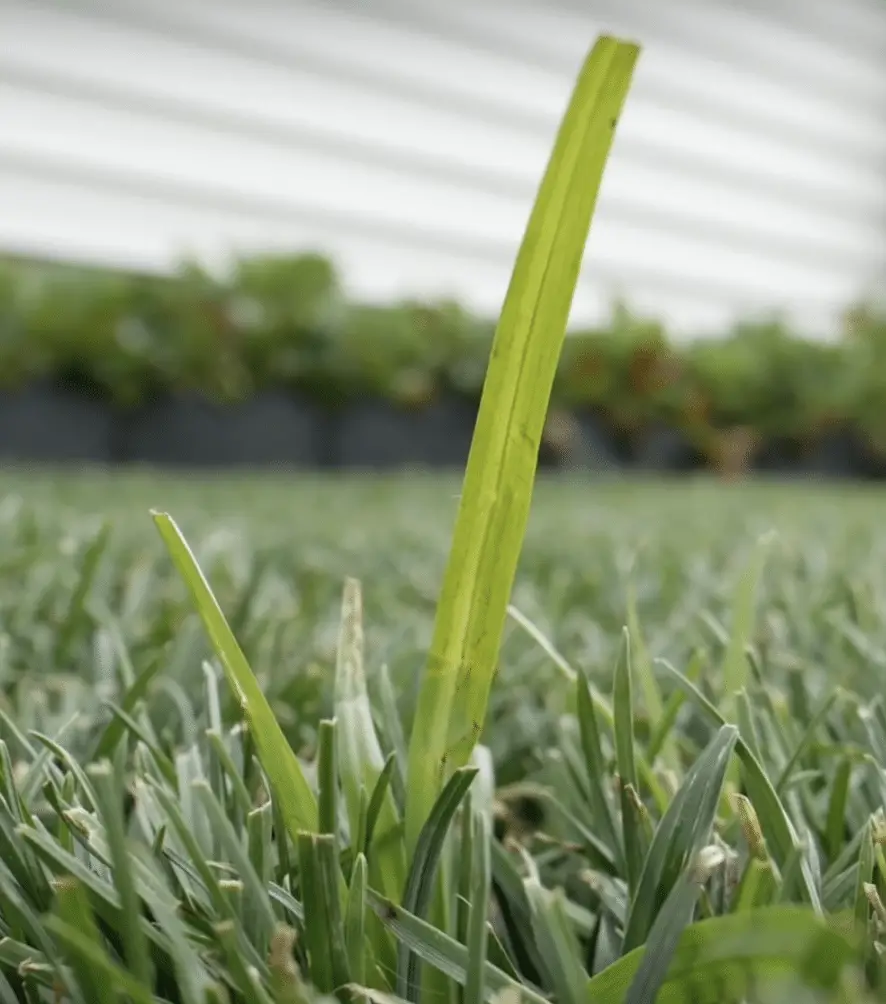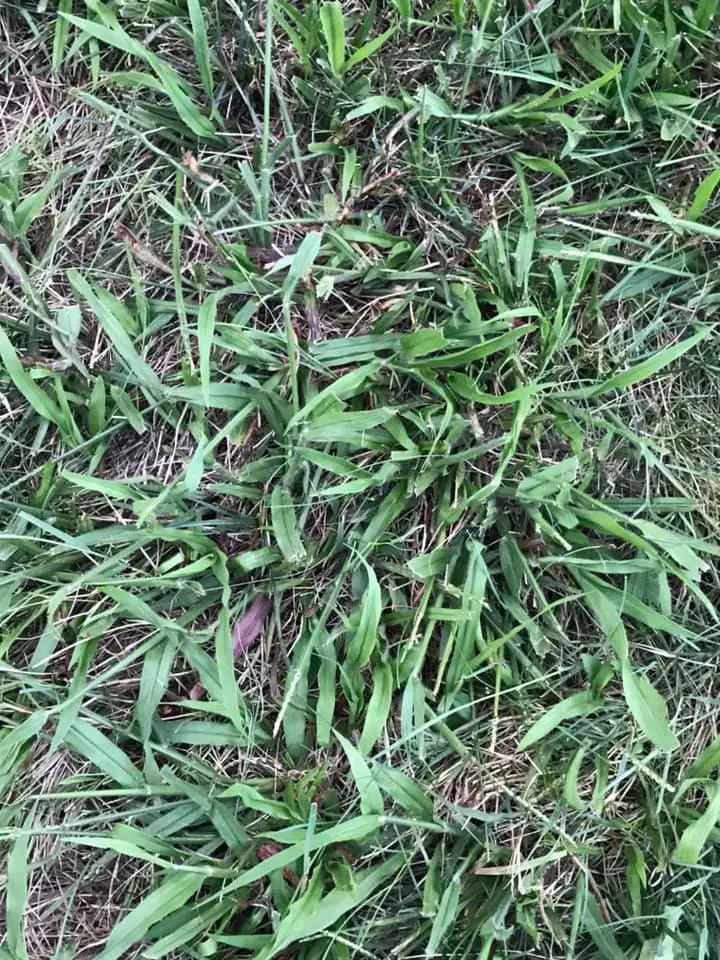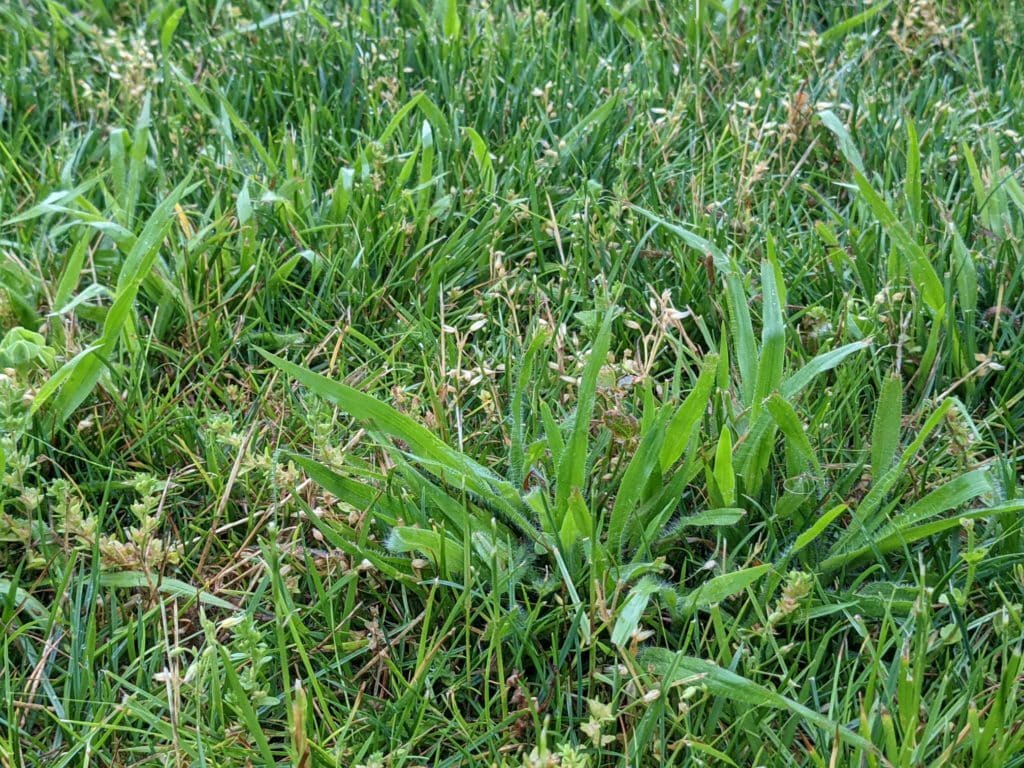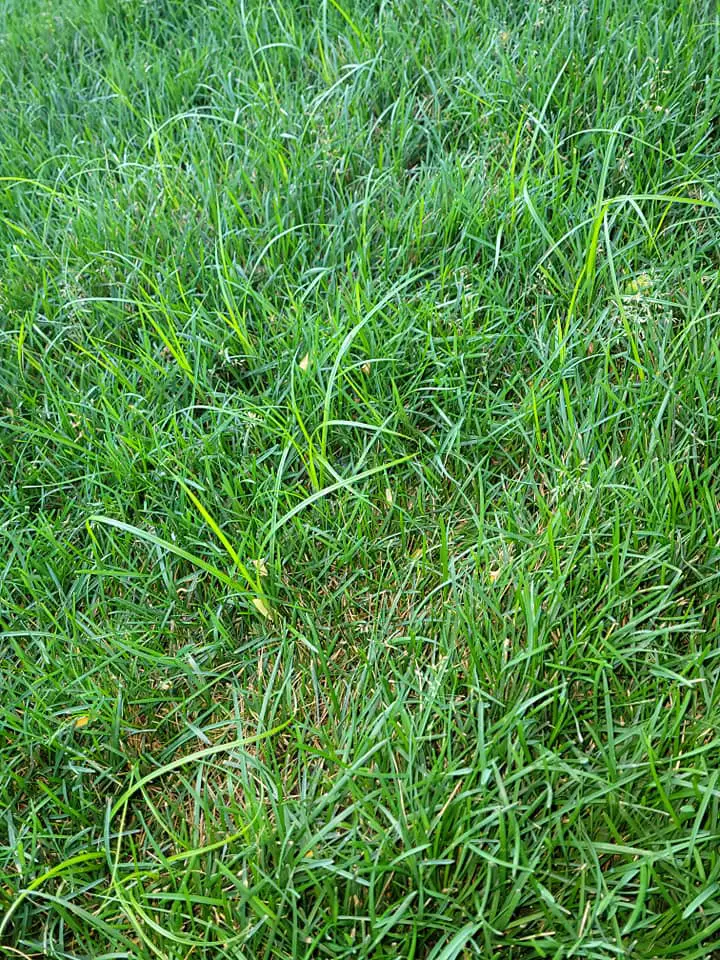When you’re trying to maintain a lush, uniform lawn, any plant that doesn’t belong there can stand out to ruin your lawn’s perfect effect. Established lawns in good health have their own natural defenses against invasions of common weeds, but most lawn grasses will fall victim to a few broadleaf weeds or grassy weeds now and then. Nutsedge and crabgrass are both undesirable plants that can invade lawn grasses. While crabgrass is categorized as a grassy weed, nutsedge is technically a perennial plant. Learn about the similarities and differences between nutsedge and crabgrass here.
Table of Contents
What’s the Difference between Nutsedge and Crabgrass?
Nutsedge plants like yellow nutsedge or purple nutsedge are perennial flowering plants that tend to thrive in moist soils. Conversely, crabgrass is an annual grassy weed that will grow in compacted soil where lawn grasses struggle. Both types of plants differ in the way they spread too. Nutsedge spreads via underground tubers and seeds. Crabgrass spreads by seed. Size is another distinguishing factor. Nutsedge can grow up to 10 inches tall, vehicle crabgrass won’t exceed four inches.
You can also look at each plant’s growth habit to tell them apart. Crabgrass grows in sort of a star pattern. Nutsedge leaves grow in bunches of three. Although some people find it hard to tell the difference between nutsedge and crabgrass early in their growing season, nutsedge can be distinguished easily once its flowers appear. If the plant growing in your turf grass develops spiky purple or yellow flowers, it’s nutsedge. Also, if you examine crabgrass closely, its leaf sheaths will have small hairs. Nutsedge does not have these hairs.
The Similarities between Nutsedge and Crabgrass
Both nutsedge and crabgrass are aggressive spreaders, particularly during the warm season. Both plants typically emerge in turf grass by late spring and grow during summer. Until nutsedge develops its flowers, both plants are vibrant green.
What Is Nutsedge?
As mentioned, nutsedge is a perennial flowering plant. Unlike crabgrass which will die after a frost, nutsedge will become dormant until the following spring when it begins to grow again. Once crabgrass turns brown, it’s done for. However, since one plant can leave behind 75,000 seeds, the following spring will likely see many new crabgrass weeds–unless you can stop them from sprouting.
Nutsedge, sometimes called water grass because of its love of moist soil, can spread aggressively. In the south, particularly in states like Florida, yellow nutsedge and purple nutsedge are plants that gardeners have to contend with year-round. Nutsedge prefers to grow in large colonies and will grow an extensive root system that can penetrate as deep as four feet into the soil. Although nutsedge isn’t toxic for pets, it can choke out your turf grass, so the sooner you get rid of it, the sooner you can prevent it from overtaking your lawn grasses.



How to Get Rid of Nutsedge
If you spot nutsedge early before it has a chance to spread, you can pull it up by hand, taking care to pull up any tubers left in the soil. General selective herbicides designed for most broadleaf weeds and grassy weeds are largely unsuccessful in killing nutsedge. Once the plant emerges, the best way to get rid of nutsedge with a product that’s specifically designed to get rid of nutsedge. Look for nutsedge killers that contain Halosulfuron (Sedgehammer) or Sulfentrazone (Dismiss). These products usually contain the chemical halosulfuron.
How to Prevent Nutsedge
To prevent nutsedge, be sure that your soil is well draining. Also, avoid mowing your lawn short as nutsedge prefers to spread to short lawn grasses. Be sure to maintain the health of your turf grass by fertilizing it and overseeding it so that you can grow a thick lawn that deters both lawn grass weeds and broadleaf weeds.
What Is Crabgrass?
Crabgrass is an annual grassy weed that tends to grow in areas where turf grasses struggle. Crabgrass is a bright green plant with coarse leaf blades. It will happily pop up in bare patches of your lawn or even in cracks in your sidewalk or driveway. Crabgrass is a low-growing lawn weed. In fact, it grows so low to the ground that it’s often able to evade the blades of lawnmowers. The weed takes its name from its grown habit; its star-shaped pattern actually resembles a crab.



How to Get Rid of Crabgrass
To get rid of crabgrass, you can apply a pre-emergent herbicide or crabgrass preventer containing prodiamine or dithiopyr in early spring. Pre-emergent herbicides typically work for about five months, so you may not prevent all the crabgrass seeds in your soil from germinating. Germinating may continue until the end of summer. At that point, you can use a post-emergent crabgrass killer containing quinclorac (Drive XLR8) to kill any existing crabgrass that is growing or emerging in your lawn.
How to Prevent Crabgrass
Along with crabgrass pre-emergents, you can prevent crabgrass from infiltrating your lawn by keeping your lawn healthy. A thick lawn is its own best defense against weeds like crabgrass. Be sure to aerate and reseed your lawn, especially in bare areas where the turf grass is struggling. Repair lawn damage quickly before grassy weeds or broadleaf weeds invade those problem areas.
Nutsedge vs Crabgrass FAQs
Does crabgrass killer kill nutsedge?
Usually, weed killers designed for crabgrass and other common weeds are not effective for killing nutsedge. Remember that nutsedge isn’t a weed; it’s a perennial plant from the sedge family. It’s not a broadleaf weed and not a grassy weed. Choose a product, instead, that’s specifically formulated to kill nutsedge in lawns.
Should you pull nutsedge grass?
If you have just a few purple nutsedge or yellow nutsedge plants growing with your turf grasses, you can attempt to pull it by hand. Be sure to pull out all of the plant’s underground tubers (underground stems) or the plant will grow back. However, if your lawn grass is infiltrated by a large colony of nutsedge, you should use an herbicide that’s designed to get rid of nutsedge.
What does nutsedge in grass look like?
In spring, when nutsedge emerges, it looks similar to grass. However, it’s likely to grow taller than your turf grass as the weather gets hotter. Nutsedge can grow to 10 inches high. It’s easy to identify it once it develops flowers. Purple nutsedge develops purple flowers and yellow nutsedge will sport yellow flowers.
How do you get rid of crabgrass and nutsedge?
You can eliminate crabgrass and nutsedge by maintaining a healthy lawn and using the appropriate herbicides to kill them. The same herbicide does not typically kill these plants. Follow label directions when applying herbicides to your lawn to specifically kill nutsedge and crabgrass.

